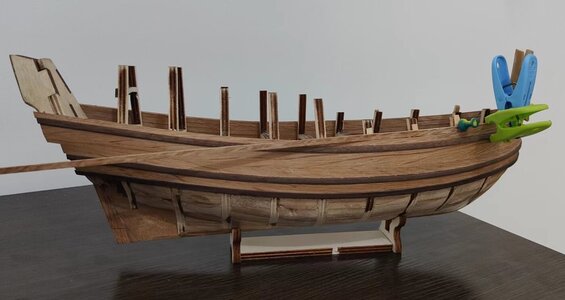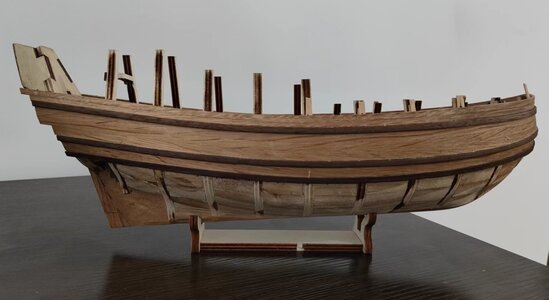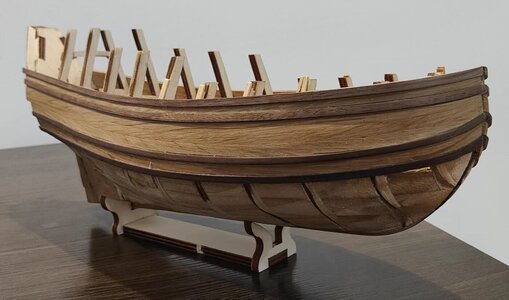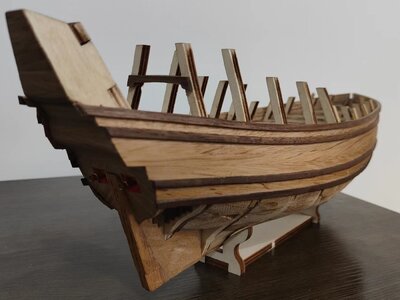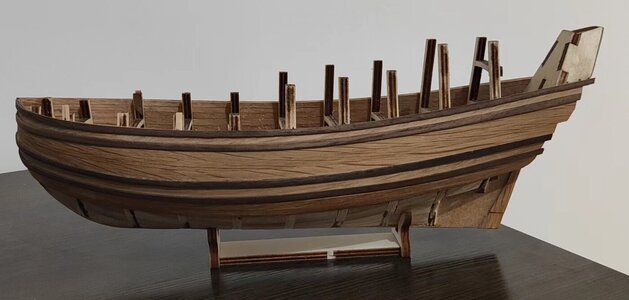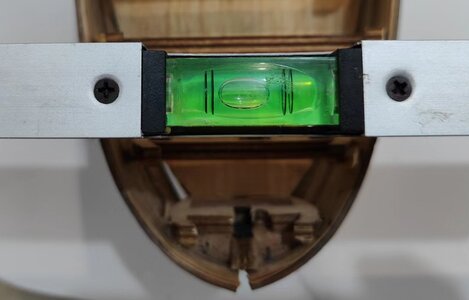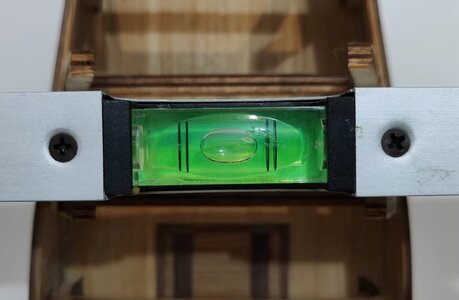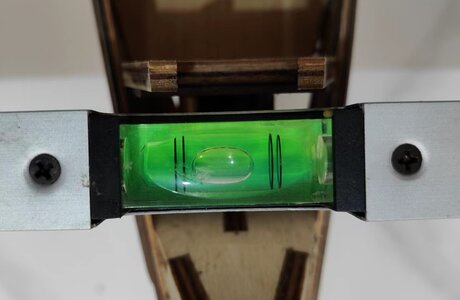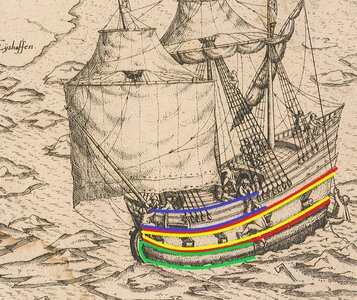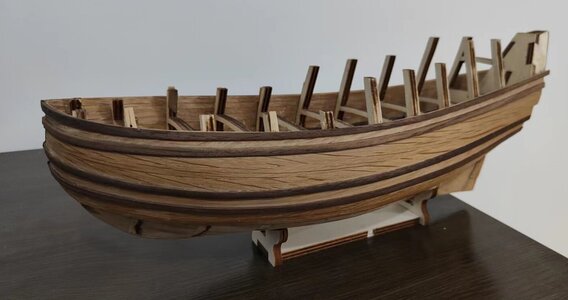Thank you for this, Hans. It is difficult to explain to others unless you have experienced Kolderstok's wood. I keep on saying that your wood is "real" wood - I know it makes no sense to others, but Kolderstok builders will know what I mean. If I look at the planking strips supplied for Bluenose (1.5mm x 4mm Pear wood), it SHOULD be the same as your 1.5mm x 4mm walnut strips (I am purposely not even talking about the oak here), but the two are worlds apart. I can bend the Bluenose strips by waving it in the air! Try that with Kolderstok's wood.
I have very seldom had to plank the walnut in portions (only in the rarest of cases), but the oak is just uniformly "stug". However, I believe I am over the most challenging part now - below the waterline, I have my filler blocks to help.

And, I must say, I am very happy how the above-wales part turned out. The surfaces are absolutely level, the bulwarks extend higher above the deck surface than on the previous build and I know (according to my gut feeling) that I have just built a much more accurate hull than WB #1.





